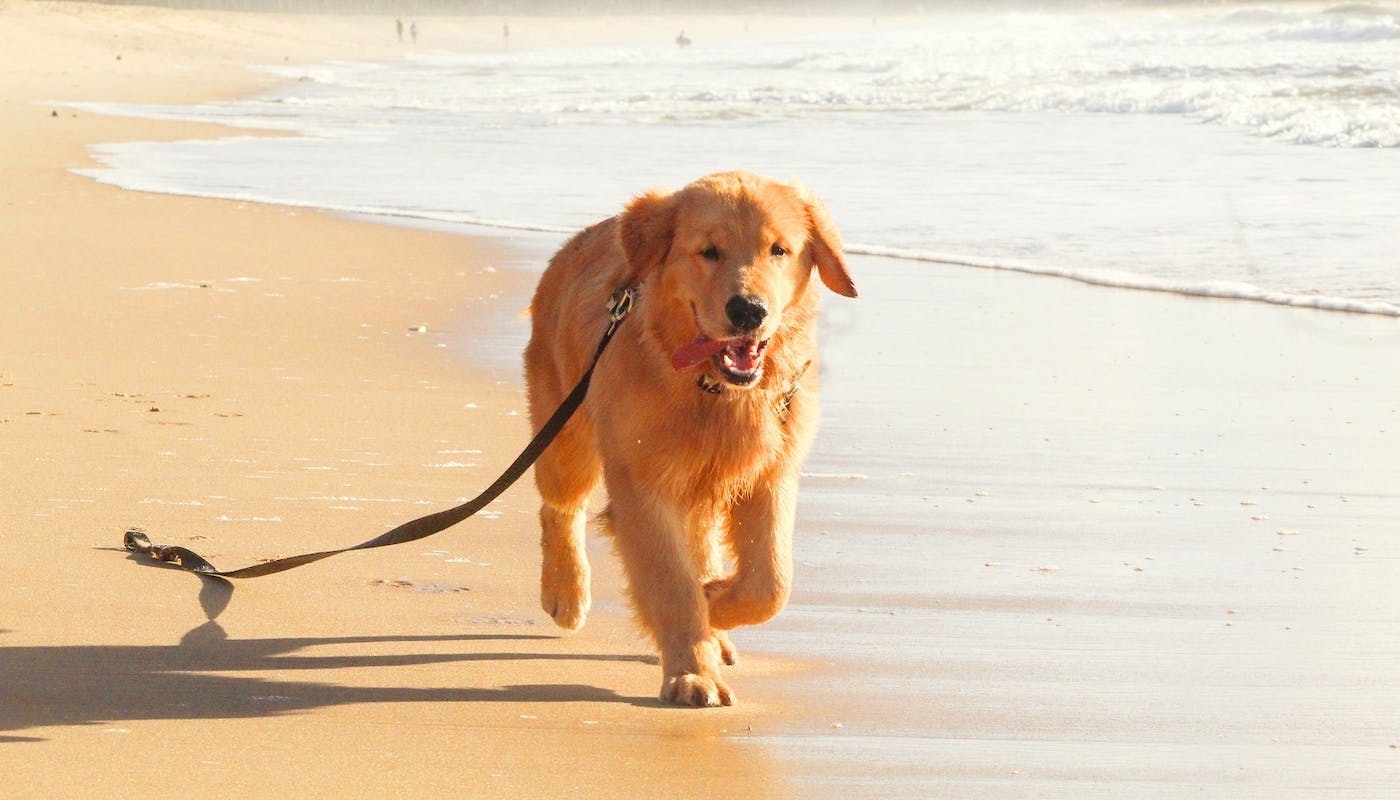Should My Dog Be Off Leash?
If you have access to an off-leash area and it’s permitted by law, you may wish to let your dog run off leash. It’s a contentious issue – so we’ll dive into the risks to help you make a decision. Ready to do it? We’ve also rounded up the key skills to practice before letting your dog run free.
Risks of Letting Your Dog Off Leash
As owners, we want our dogs to live their best lives. But letting them off leash comes with several risks, and not all of those are predictable.
Some risks include:
Chasing animals or cars
Dogs with a strong chase instinct, or high prey drive, may dart off in pursuit of a squirrel or even a car. They’re unlikely to remember their road training and might run across busy roads or go too far and get lost.
Aggressive encounters
Aggressive dogs, even if they’re on leash, can injure or frighten your dog. The dog who is on a leash may feel insecure and defensive, leading to a heightened response.
Nipping children or adults
Even if you know your dog really well, we can never predict behavior with certainty. They should not be allowed to approach nervous children or adults. The consequences could be very serious.
Trespass
Your dog won’t read signs and they won’t know where boundaries lie – which means they might trespass on someone’s property and defile it.
Toxic poisoning
Off-leash, your dog is more likely to find and eat toxins; on the leash, they stay in your sight so you can warn them off.
Training Your Dog To Go Off Leash
If you have identified a safe, enclosed area and you want to let your dog off leash, training is essential. Here are the key skills you’ll need to get right before letting your dog run free.
Recall
Start by rewarding your dog with a treat whenever they come to you, and test them at times when they are busy. Once their recall is strong, you can start to stretch their skill.
Why? Recall in your yard or home is completely different to outdoor recall – where there are enticing things like birds, humans, and other pups bouncing around! Look around your area for events like puppy parties and classes, at which your dog can begin listening to commands while surrounded by exciting distractions.
Tip: Perfecting this skill takes time and practice: you’ll have to do it over and over. But don’t become the person shouting “Barney, Barney, Barney, Barney!” on your walk. If your dog doesn’t respond to the first call during training sessions, don’t keep calling. Stop for a few seconds to reset before you try again – or they’ll learn they can come on the third or fourth yell. It’s important to practice this in a safe place, where your dog’s response is not critical.
Not too far
Start by throwing a treat on the floor, then rewarding your dog with a treat when they turn to look at you. So far, so good: most dogs with a good owner-bond will do this happily, and you can engage them with praise and rewards when they do it.
Next, teach your dog to respond to their name by giving them treats just for looking towards you. If your dog starts to trot back to you without prompt, reward that behavior, every time they glance over their shoulder and make eye contact with you, reward that behavior too. This will build their instinctive desire to not roam too far from their alpha.
Tip: When they have an instant response to their name, you have a useful cue which will help you to keep their attention away from unwelcome distractions (like waste food or hostile dogs). It also gives you time to decide what you want them to do.
Drop!
You can begin teaching this skill through play. Engage your dog in a game of tug-of-war or fetch. When you want them to let go, introduce ‘drop’ and reward them – either with another throw or a treat (depending on their personality – and what makes them motivated).
Make sure you are using top-quality treats to ensure quick results…
Tip: This command is essential if your dog discovers something dead or poisonous. Train your dog so that dropping on command is second-nature.
Leave
This skill is more difficult to teach your dog, who can make their own ‘reward’ by collecting dead birds or horse droppings! Place a high-value piece of food or a treat on the floor, let your dog see it, and cover it with your hand. When they look away from your hand, use a clicker or marker word like ‘yes’ and reward them from the other hand. When they understand the required skill (looking away, making no effort to steal the treat), move on to try the same command with a piece of food which is uncovered. This one takes plenty of practice!
Heel
Teach your dog to stay at your side – this can help you to gain control when you are out and unsure of your surroundings.
You should start practicing this skill at home, in your yard, or another enclosed place without distractions. Ask your dog to sit at your side and then start walking and giving treats at nose height so they move with you. You’ll have to give treats continuously at first!
When they are comfortable with the movement, count one-two-three between treats so that you can phase them out. When your dog is walking beautifully at heel, it is still a good idea to give them occasional treats to let them know you appreciate their continued behavior!
Tip: You’ll use this command when you are approached by strangers and want to control the way your dog responds. To reach this point, practice the ‘heel’ command somewhere with distractions.
